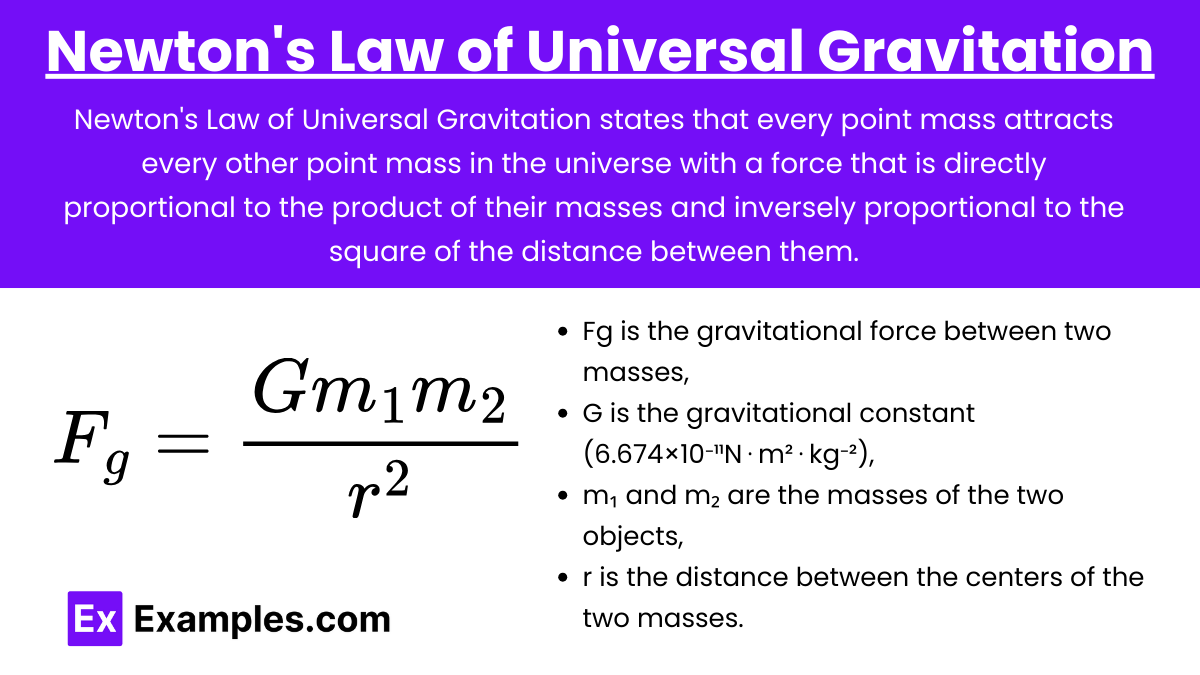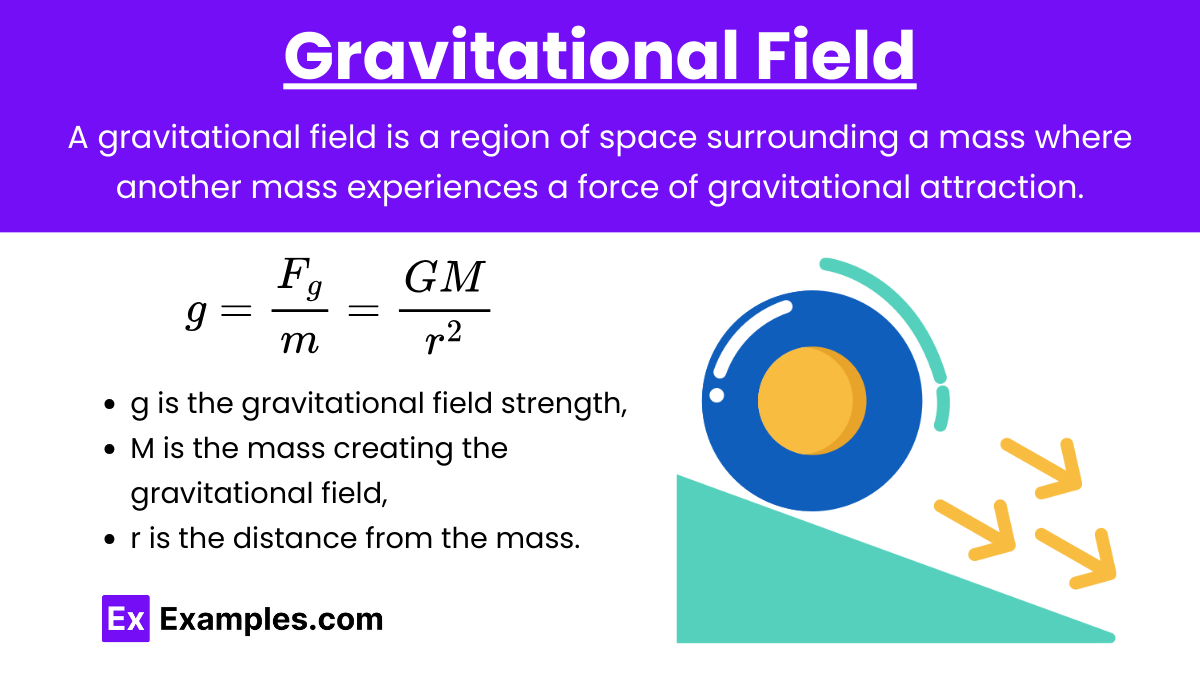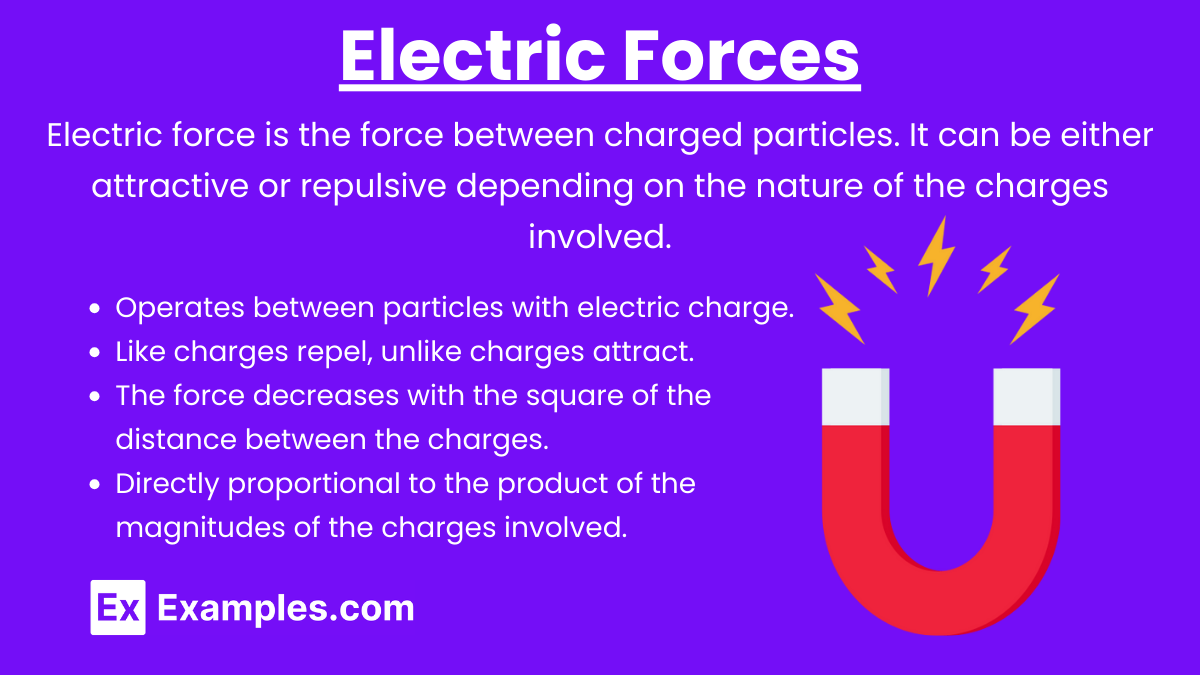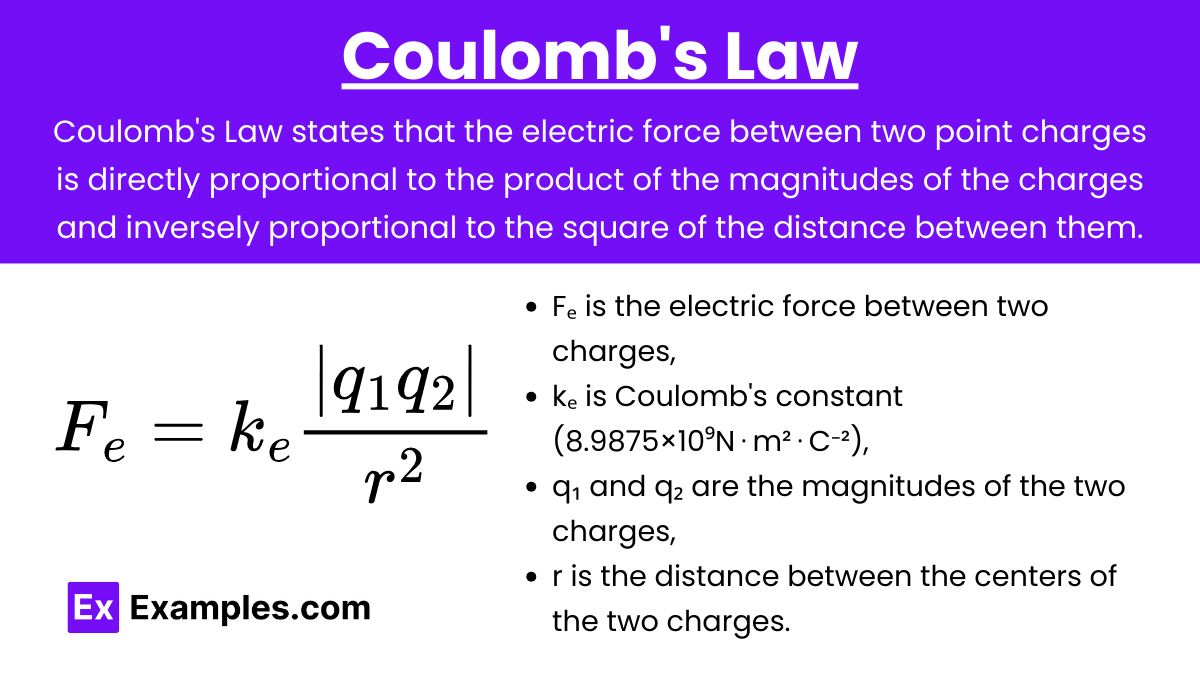Understanding gravitational and electric force is crucial for mastering the concepts of forces and fields in the AP Physics exam. These fundamental forces govern interactions between masses and charges, respectively. Below are detailed notes to help you achieve a high score on your AP Physics exam.
Learning Objectives
For the AP Physics exam, you should learn to differentiate between gravitational and electric forces, understand their respective equations (Newton’s Law of Gravitation and Coulomb’s Law), and analyze how these forces act between masses and charges. You should also grasp the concepts of field strength, potential energy, and how these forces influence the motion of objects. Furthermore, you must solve problems involving superposition, vectors, and compare the relative strengths and ranges of these fundamental forces.
Gravitational Forces
Newton’s Law of Universal Gravitation

Definition: Newton’s Law of Universal Gravitation states that every point mass attracts every other point mass in the universe with a force that is directly proportional to the product of their masses and inversely proportional to the square of the distance between them.
Formula:
where:
- Fg is the gravitational force between two masses,
- G is the gravitational constant (6.674×10⁻¹¹N⋅m²⋅kg⁻²),
- m₁ and m₂ are the masses of the two objects,
- r is the distance between the centers of the two masses.
Key Points:
- Gravitational force is always attractive.
- It acts along the line joining the centers of the two masses.
- It is a central force, depending only on the distance between the objects.
Characteristics
- Universal: Acts between any two masses in the universe.
- Attractive: Always pulls masses toward each other.
- Inverse-Square Law: The force decreases with the square of the distance between the masses.
- Proportional to Mass: Directly proportional to the product of the two masses involved.
Examples
- Planetary Orbits: Gravitational force keeps planets in orbit around stars.
- Tides: The gravitational pull of the moon and the sun causes ocean tides on Earth.
- Falling Objects: Objects fall to the ground due to Earth’s gravitational pull.
Gravitational Field

Definition: A gravitational field is a region of space surrounding a mass where another mass experiences a force of gravitational attraction.
Gravitational Field Strength:
where:
- g is the gravitational field strength,
- M is the mass creating the gravitational field,
- r is the distance from the mass.
Key Points:
- Gravitational field strength decreases with the square of the distance from the mass.
- It is a vector quantity, pointing towards the mass creating the field.
Electric Forces

Definition
Electric force is the force between charged particles. It can be either attractive or repulsive depending on the nature of the charges involved.
Characteristics
- Acts Between Charges: Operates between particles with electric charge.
- Both Attractive and Repulsive: Like charges repel, unlike charges attract.
- Inverse-Square Law: The force decreases with the square of the distance between the charges.
- Proportional to Charge: Directly proportional to the product of the magnitudes of the charges involved.
Coulomb’s Law

Definition: Coulomb’s Law states that the electric force between two point charges is directly proportional to the product of the magnitudes of the charges and inversely proportional to the square of the distance between them.
Formula:
where:
- Fₑ is the electric force between two charges,
- kₑ is Coulomb’s constant (8.9875×10⁹N⋅m²⋅C⁻²),
- q₁ and q₂ are the magnitudes of the two charges,
- r is the distance between the centers of the two charges.
Key Points:
- Electric force can be attractive (opposite charges) or repulsive (like charges).
- It acts along the line joining the centers of the two charges.
- It is a central force, depending only on the distance between the objects.
Electric Field

Definition: An electric field is a region of space around a charged object where another charge experiences a force.
Electric Field Strength:
where:
- E is the electric field strength,
- Q is the charge creating the electric field,
- r is the distance from the charge.
Key Points:
- Electric field strength decreases with the square of the distance from the charge.
- It is a vector quantity, pointing away from positive charges and towards negative charges.
Comparing Gravitational and Electric Forces
Similarities
- Inverse Square Law:
- Both forces obey the inverse square law, meaning the force decreases with the square of the distance between the objects.
- Central Forces:
- Both are central forces, acting along the line joining the centers of the two interacting objects.
- Field Representation:
- Both forces can be represented by fields (gravitational field and electric field) that describe the influence of a mass or charge in space.
Differences
- Nature of Forces:
- Gravitational force is always attractive, whereas electric force can be either attractive or repulsive.
- Magnitude of Constants:
- The gravitational constant G is much smaller than Coulomb’s constant kₑ, making gravitational forces generally weaker than electric forces for typical objects.
- Source of Forces:
- Gravitational force acts between masses, while electric force acts between charges.
Examples and Problems
Example 1: Gravitational Force Between Two Masses
Scenario: Calculate the gravitational force between two 10 kg masses separated by a distance of 2 meters.
Solution:
Example 2: Electric Force Between Two Charges
Scenario: Calculate the electric force between two charges of +3C and −3C separated by a distance of 1 meter.
Solution:
Example 3: Gravitational Field Strength
Scenario: Calculate the gravitational field strength at the surface of a planet with mass 6×10²⁴kg and radius 6×10⁶m.
Solution:
Example 4: Electric Field Strength
Scenario: Calculate the electric field strength 0.5 meters away from a charge of +2C.
Solution:
Applications
Gravitational Force
- Astronomy: Understanding the motion of planets, stars, and galaxies.
- Engineering: Designing structures to withstand gravitational loads.
- Space Exploration: Calculating trajectories for spacecraft.
Electric Force
- Electronics: Designing and operating electronic devices and circuits.
- Chemistry: Explaining the behavior of atoms and molecules.
- Medical Technology: MRI and other imaging technologies rely on electric forces.


